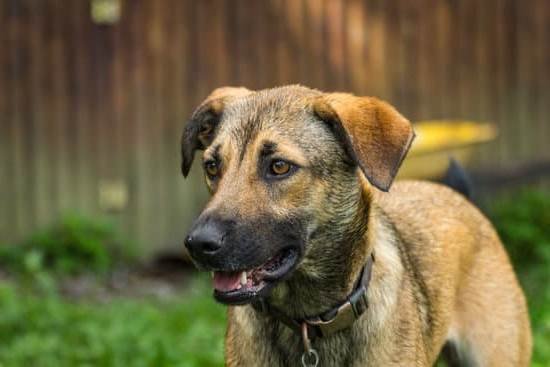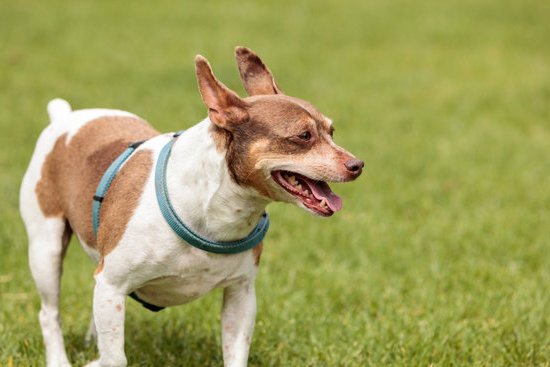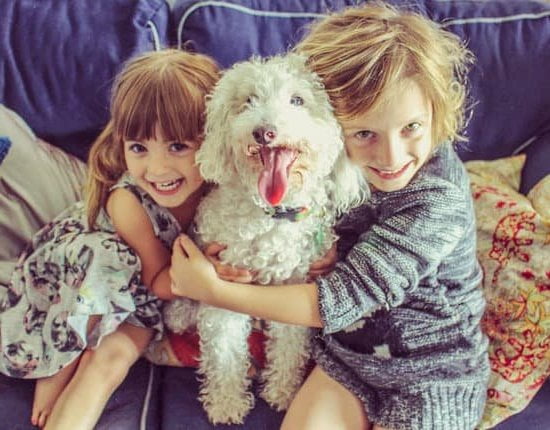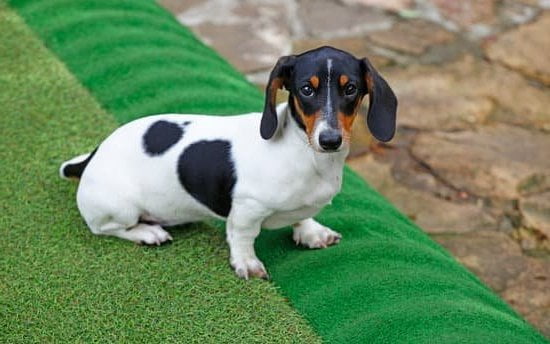Training your dog to go outside for potty breaks is an essential part of their overall care and well-being. It not only helps maintain a clean living environment but also promotes good hygiene habits for your furry friend. In this article, we will explore the steps you can take to teach your dog how to go outside effectively.
One of the most common challenges that pet owners face is how to train their dogs to relieve themselves outdoors. The key lies in choosing the right time and place for outdoor potty training, establishing a routine, and using positive reinforcement techniques. By following these steps consistently, you can help your dog develop good habits and avoid accidents inside the house.
As you embark on this training journey with your canine companion, remember that patience and consistency are crucial. Set realistic expectations, be prepared for setbacks, and celebrate each success along the way. With dedication and the right approach, you can successfully train your dog to go outside for potty breaks.
Choosing the Right Time and Place for Outdoor Potty Training
Understanding Your Dog’s Needs
Before tackling outdoor potty training, it is crucial to understand your dog’s specific needs. Different breeds and ages may have different potty requirements. Young puppies, for example, have smaller bladders and may need more frequent trips outside. Similarly, some dogs may prefer certain surfaces to do their business on. By understanding your dog’s unique needs, you can tailor your training approach accordingly.
Picking the Right Time
Timing plays a significant role in successfully training your dog to go outside. Ideally, choose times when your dog is most likely to need a potty break – such as right after eating, waking up from a nap, or after playtime. By being observant of your dog’s behavior cues, you can anticipate when they might need to go outside. Consistency in timing will help establish a routine that your dog will come to rely on.
Selecting the Optimal Location
When selecting a place for outdoor potty training, consider factors such as convenience and safety. Choose an area that is easily accessible from your home and where you feel comfortable supervising your dog during potty breaks. Additionally, look for a spot with a surface that is suitable for elimination – some dogs prefer grass over concrete, for example. Creating a pleasant environment for your dog will encourage them to associate going outside with positive experiences.
By focusing on understanding your dog’s needs, selecting the right time and place for outdoor potty training becomes more manageable. Consistency in timing and location will help reinforce good habits in your furry friend. Implementing these strategies will set the groundwork for successful outdoor potty training and strengthen the bond between you and your pet.
Establishing a Routine and Schedule for Your Dog’s Outdoor Potty Breaks
To begin, choose specific times during the day when you will take your dog outside for potty breaks. Typically, dogs need to relieve themselves after waking up, eating, and playing. By taking them out at these key times, you are setting them up for success. Additionally, make sure to take them out right before bedtime to avoid accidents during the night.
Another important aspect of establishing a routine is choosing a specific spot in your yard or on your walking route where you want your dog to go potty. Dogs rely heavily on scent cues, so by consistently bringing them to the same spot, you are reinforcing in their minds that this is the designated area for their business. Be patient during this process as it may take some time for your dog to catch on.
| Aspect of Routine | Importance |
|---|---|
| Consistent timing | Helps anticipate dog’s needs and develop good habits |
| Specific potty spot | Reinforces proper location through scent cues |
Additionally, remember that every dog is different, and what works for one may not work for another. Pay attention to your dog’s body language and behavior cues so that you can tweak the routine as needed. With patience, consistency, and positive reinforcement techniques, you can successfully train your dog to go outside for all their potty breaks.
Using Positive Reinforcement Techniques to Encourage Outdoor Potty Behavior
Positive Reinforcement Techniques
When it comes to training your dog to go outside for potty breaks, positive reinforcement is key. This method involves rewarding your furry friend for exhibiting the desired behavior, in this case, going potty outdoors. Positive reinforcement can be in the form of treats, praise, or even playtime as a reward for successfully going outside to do their business. By associating going potty outside with something positive, your dog will be more motivated to repeat this behavior.
Consistency Is Key
Consistency plays a significant role in using positive reinforcement effectively. It’s essential to praise and reward your dog immediately after they’ve gone potty outside so they understand what behavior is being rewarded.
Be consistent in your approach and make sure everyone in the household follows the same training techniques to avoid confusion for your pet. Remember that dogs thrive on routine and structure, so sticking to a consistent training schedule will help reinforce the outdoor potty behavior you’re aiming for.
Patience and Persistence
Training your dog to go outside for potty breaks requires patience and persistence from your end. Every dog learns at their own pace, so it’s crucial not to get frustrated if there are setbacks or accidents along the way. Stay patient and continue using positive reinforcement techniques consistently.
With time, patience, and lots of praise and rewards, your furry companion will eventually come to understand where their designated potty area is in the yard. Remember that building a strong bond with your pet through training is equally important as achieving the desired behavior of going potty outside.
Dealing With Accidents and Setbacks During the Training Process
It’s essential to stay patient and consistent with your training efforts. If your dog has an accident inside, take them outside immediately after cleaning up to reinforce the idea that going potty is meant to be done outdoors. Keep a close eye on your dog during the training process, especially after meals, playtime, or naps, as these are common times when they may need to go outside.
Incorporating a command or cue when taking your dog outside can be beneficial in reinforcing the behavior you want. Use phrases like “go potty” or “do your business” consistently when you take them out, so they associate those words with the action of going potty outdoors. Remember that every dog learns at their own pace, so be patient and continue providing positive reinforcement as they progress in their training.
| Tips for Dealing With Accidents | Benefits of Staying Patient and Consistent |
|---|---|
| Clean up accidents promptly and thoroughly. | Helps establish a routine and clear expectations for your dog. |
| Take your dog outside immediately after an accident indoors. | Reduces confusion and reinforces outdoor potty behavior. |
| Incorporate a verbal command or cue when going outside for potty breaks. | Strengthens communication between you and your pet during training. |
Tips for Crate Training and Its Role in Outdoor Potty Training
Crate training can be a valuable tool in successfully training your dog to go outside for potty breaks. When done correctly, a crate can create a safe and comfortable space for your dog, as well as help with establishing a routine for outdoor potty breaks. Here are some tips on how to effectively incorporate crate training into your outdoor potty training regimen:
- Choose the right size crate: Make sure the crate is large enough for your dog to stand up, turn around, and lie down comfortably. A crate that is too small can be uncomfortable for your dog and hinder the training process.
- Introduce the crate gradually: Begin by introducing your dog to the crate slowly and positively. Place treats and toys inside to encourage them to explore and associate positivity with the crate.
- Use the crate as a potty training tool: When you are unable to supervise your dog indoors, place them in the crate to prevent accidents. Dogs instinctively avoid soiling their resting area, so this can help reinforce the idea of going outside for potty breaks.
Crate training should not be used as a punishment or for extended periods of time. It is essential to provide plenty of exercise, mental stimulation, and opportunities for outdoor potty breaks throughout the day. With consistency and positive reinforcement, your dog will learn how to associate going outside with eliminating waste.
In addition to using the crate as part of outdoor potty training, it is crucial to establish a designated potty area in your yard for your dog. This helps create a consistent environment where they can eliminate waste while reinforcing good behavior. Remember that each dog is unique, so it may take time and patience to find what works best for your furry friend when it comes to outdoor potty training.
Creating a Designated Potty Area in Your Yard for Your Dog
One of the key steps in successfully training your dog to go outside is creating a designated potty area in your yard. This not only helps to establish a consistent location for your dog to relieve themselves but also aids in minimizing accidents inside the house. Here are some tips on how to create an effective potty area for your furry friend:
- Choose an appropriate spot: Select a quiet and easily accessible area in your yard that is away from high traffic areas and where your dog feels comfortable.
- Use visual markers: To help your dog recognize the designated potty area, consider using visual markers such as a small fence, flags, or even rocks outlining the space.
- Introduce scent cues: Encourage your dog’s natural instincts by introducing a scent cue in the potty area, such as placing a small amount of their urine or feces in the spot.
Training your dog to use the designated potty area may take time and patience, especially if they are accustomed to going wherever they please. However, with consistency and positive reinforcement, they will eventually learn to associate this specific area with bathroom breaks. Remember to praise and reward your pup every time they use the designated potty spot successfully.
In addition to creating a designated potty area outdoors, it’s essential to regularly clean up after your dog to maintain hygiene and avoid odors. By following these steps and being patient with your furry companion, you’ll be well on your way to successfully training them to go outside for their bathroom needs.
Consistency and Patience
Training your dog to go outside is a crucial aspect of pet ownership, as it helps maintain a clean and healthy environment for both you and your furry friend. Consistency and patience are key factors in successfully teaching your dog where and when to do their business outdoors. It’s important to understand that every dog learns at their own pace, so be prepared to invest time and effort into the training process.
Consistency in training your dog means establishing a clear routine and schedule for outdoor potty breaks. Choose specific times throughout the day when you will take your dog outside to relieve themselves, such as first thing in the morning, after meals, and before bedtime.
By following a consistent schedule, you can help reinforce the behavior of going outside to potty. Additionally, make sure to take your dog out to the same spot each time, as this will help them associate that location with bathroom time.
Patience is another crucial factor when training your dog to go outside. Remember that accidents are inevitable during the learning process, so it’s important not to get frustrated or lose patience with your pet. Instead of scolding or punishing your dog for accidents, remain calm and show them the correct behavior by immediately taking them outside to their designated potty area.
Positive reinforcement techniques such as praise, treats, or toys can also be used to encourage outdoor potty behavior. By being patient and consistent in your training efforts, you will eventually see progress in your dog’s ability to go outside effectively.
Celebrating Success and Rewarding Your Dog for Successful Outdoor Potty Breaks
Training your dog to go outside for potty breaks is a crucial part of their overall obedience and well-being. Celebrating the successful moments when your furry friend goes outside to relieve themselves not only reinforces this desired behavior but also strengthens the bond between you and your pet. Remember, positive reinforcement goes a long way in training dogs effectively on how to go outside.
One effective way to celebrate success during outdoor potty training is by offering verbal praise and physical affection, such as petting or giving treats. This positive feedback helps your dog associate going outside with a sense of accomplishment and pleasure. Additionally, maintaining consistency in rewarding your dog for successful potty breaks will help them understand what behaviors are desired and expected from them.
As you navigate through the process of training your dog to go outside, it’s important to remember that setbacks and accidents are normal. Patience is key during these times, as scolding or punishing your dog for accidents can be counterproductive. Instead, stay calm and continue with the established routine and schedule for outdoor potty breaks. With time, patience, and dedication to positive reinforcement techniques, you will see progress in how to train your dog to go outside successfully.
Frequently Asked Questions
How Do I Train My Dog to Pee and Poop Outside?
Training your dog to pee and poop outside requires consistency, patience, and positive reinforcement. Start by taking your dog outside frequently, especially after meals or naps. When they eliminate outdoors, praise and reward them. If accidents happen indoors, clean up without scolding.
How Do I Get My Dog to Want to Go Outside?
To get your dog to want to go outside, make it a positive experience for them. Use treats, toys, or verbal praise as motivation. Create a routine for outdoor potty breaks to help them understand when it’s time to go. Gradually, your dog will associate going outside with positive interactions.
How Long Does It Take to Train a Dog to Go Outside?
The time it takes to train a dog to go outside can vary depending on the dog’s age, breed, and prior training experiences. Generally, it may take a few weeks to several months for a dog to consistently eliminate outside. Consistent training methods and patience are key in successfully teaching your dog this behavior.

Welcome to the blog! I am a professional dog trainer and have been working with dogs for many years. In this blog, I will be discussing various topics related to dog training, including tips, tricks, and advice. I hope you find this information helpful and informative. Thanks for reading!





